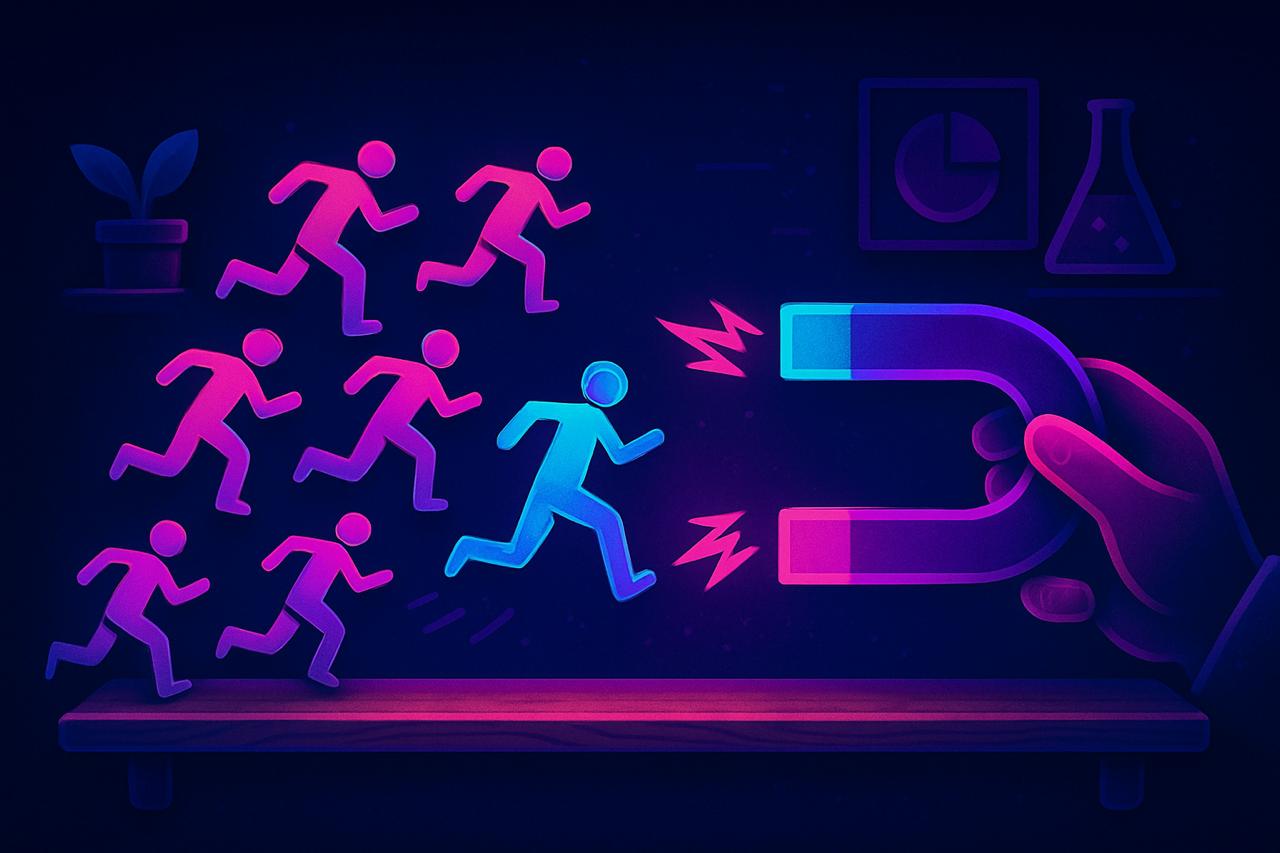Intro: Lead Magnets Shouldn’t Just Collect Emails, They Should Earn Trust
A lot of lead magnets fail, and not because they’re ugly. The real reason? They’re misaligned. Misaligned with what the user actually wants. Misaligned with the funnel stage. Misaligned with the broader content strategy.
In today’s B2B and SaaS landscapes, lead magnets that work aren’t just clever PDFs. They’re high-intent, strategically placed assets that solve real problems for real people, at the right time.
You’re not just trading content for contact info anymore. You’re building micro-commitments that create momentum, qualify interest, and deepen trust.
When done right, lead magnets create signals. They reveal user needs, clarify purchase intent, and open a path for deeper conversations. The most effective ones offer undeniable value in the moment, and position your brand for what's next.
Let’s unpack what a lead magnet really is, why most don’t convert, and how to build one that aligns with your full-funnel content system.
Why
Lead magnets are about more than lead capture, they’re about lead quality.
Done well, a lead magnet pulls the right user into the right conversation. Done poorly, it clogs your CRM with low-intent noise. That’s why context and placement are everything.
Think of lead magnets as bridges, not traps:
• Top of Funnel (TOFU): Educate or entertain—build awareness. These magnets should inspire curiosity and attract your ideal audience without pressure.
• Middle of Funnel (MOFU): Solve a pressing problem—build trust. Here, magnets offer clarity, frameworks, or tools to help users navigate decisions.
• Bottom of Funnel (BOFU): Show transformation or ROI—build urgency. These assets demonstrate how your solution solves a real problem, often backed by data or stories.
When mapped intentionally, lead magnets guide prospects from interest to intent. Each one should fit a clear moment in the buyer’s journey—not just the marketing calendar.
How
1. Start With a Real Question
Lead magnets are answers. Don’t start with format, start with the user’s question:
• "How do I solve X?"
• "What am I missing about Y?"
• "Why is Z still a problem for my team?"
Use sales conversations, support chats, or community threads to find these questions. You want to build content that meets real tension, not imagined interest.
The most powerful lead magnets feel like they were written just for you. That’s because they’re rooted in authentic discovery, not content brainstorming.
2. Match the Funnel Stage
The closer the magnet is to the funnel moment, the higher the conversion rate. Don’t offer a whitepaper to someone who just discovered your brand.
Instead:
• TOFU: Templates, trend reports, checklists—bite-sized, shareable, low-commitment
• MOFU: Strategy guides, scorecards, use-case briefings—tools that offer direction and context
• BOFU: ROI calculators, vendor comparisons, case study packs—assets that help close the deal
Relevance drives results. Choose the format and topic based on intent, not trends.
3. Build for Skim + Depth
Great lead magnets do two things at once:
• Let users skim for value
• Invite users to dive deeper when they’re ready
That means:
• Short, bold summaries up top
• Clear structure, formatting, and headlines
• Visual cues like icons, illustrations, or checkmarks
People are busy. Your lead magnet should work whether they read it for 30 seconds or 30 minutes.
4. Layer Content + Context
A great magnet lives inside a system:
• Embed it into relevant blog posts with contextual CTAs
• Design email follow-ups that continue the theme or problem-solution arc
• Use UTMs and pixel tracking to analyze journey-to-conversion paths
Your lead magnet isn’t an endpoint, it’s a turning point. Everything around it should guide the user forward.
5. Deliver Immediately, Then Continue the Journey
Don’t just send a PDF and hope for the best. Build a flow:
• Confirmation page → Thank them + offer a related CTA
• First email → Recap key value, link to the asset, and introduce the next step
• Second email → Tell a story that aligns with their pain point
• Third email → Invite them to engage, reply, book, or explore deeper
This transforms a simple download into a mini customer journey.
What
There’s no one perfect format, but there are proven patterns. Here are a few:
• Scorecards or Self-Assessments
Interactive, diagnostic tools that help users evaluate themselves. Great for creating urgency or qualifying leads.
• Playbooks and Strategy Guides
Useful for MOFU audiences looking for a system, not just tips. These signal thought leadership and expertise.
• Comparison Tools and Calculators
Perfect for BOFU buyers who want evidence. Cost calculators, feature matrices, or interactive ROI tools help users justify decisions.
• Templates or Swipe Files
Quick wins with minimal effort. Ideal for TOFU sharing, especially if they tie into your product's value prop.
• Short Courses or Mini Demos
Educational content that offers depth. Great for complex products or technical audiences who prefer hands-on learning.
Choose the format that fits both the user and the problem. Then build with:
• A clear outcome
• A path forward
• A connection to your next CTA
FAQs
What is a lead magnet?
A lead magnet is a valuable piece of content or tool offered in exchange for contact information, typically an email address.
What makes a lead magnet high-converting?
It solves a specific problem, is relevant to the user’s funnel stage, and delivers instant value.
Can lead magnets work for B2B?
Absolutely. In B2B, lead magnets help qualify leads and drive intent when mapped to buyer journeys.
What’s the best format for a lead magnet?
It depends on the funnel stage. Use TOFU formats like templates and checklists, and MOFU/BOFU formats like calculators or strategy packs.
Should I gate my lead magnet or offer it freely?
Gate it if it creates meaningful exchange and intent. Offer it freely if the value is better delivered open for awareness and sharing.
How do I promote a lead magnet?
Embed in blogs, link in emails, use popups, or integrate into outbound and paid ads.
How many lead magnets should I have?
You don't need dozens. Start with one per funnel stage, then build variations for different personas or use cases.
How do I know if my lead magnet is working?
Track opt-in rates, follow-up engagement, and downstream pipeline activity. Don’t just look at downloads, look at qualified outcomes.
Can Funnely help build lead magnets?
Yes. Funnely helps teams create high-converting, funnel-aligned lead magnets as part of a larger content system.
Conclusion: Lead Magnets Should Feel Like Help, Not Bait
A good lead magnet feels like a favor. A shortcut. A signal that says: "We understand your problem and here’s something useful to solve it."
It earns attention. It starts conversations. It qualifies without asking.
If you're only thinking in formats, you're missing the bigger win: strategic alignment across the funnel.
At Funnely, we help growth teams craft magnets that are built with user questions, backed by conversion data, and measured by downstream impact.
See how lead magnets fit into full-funnel content or request a growth sprint to build your own high-intent system.



%20Strategy%20and%20How%20Do%20You%20Build%20One%20That%20Works%3F.jpeg)





